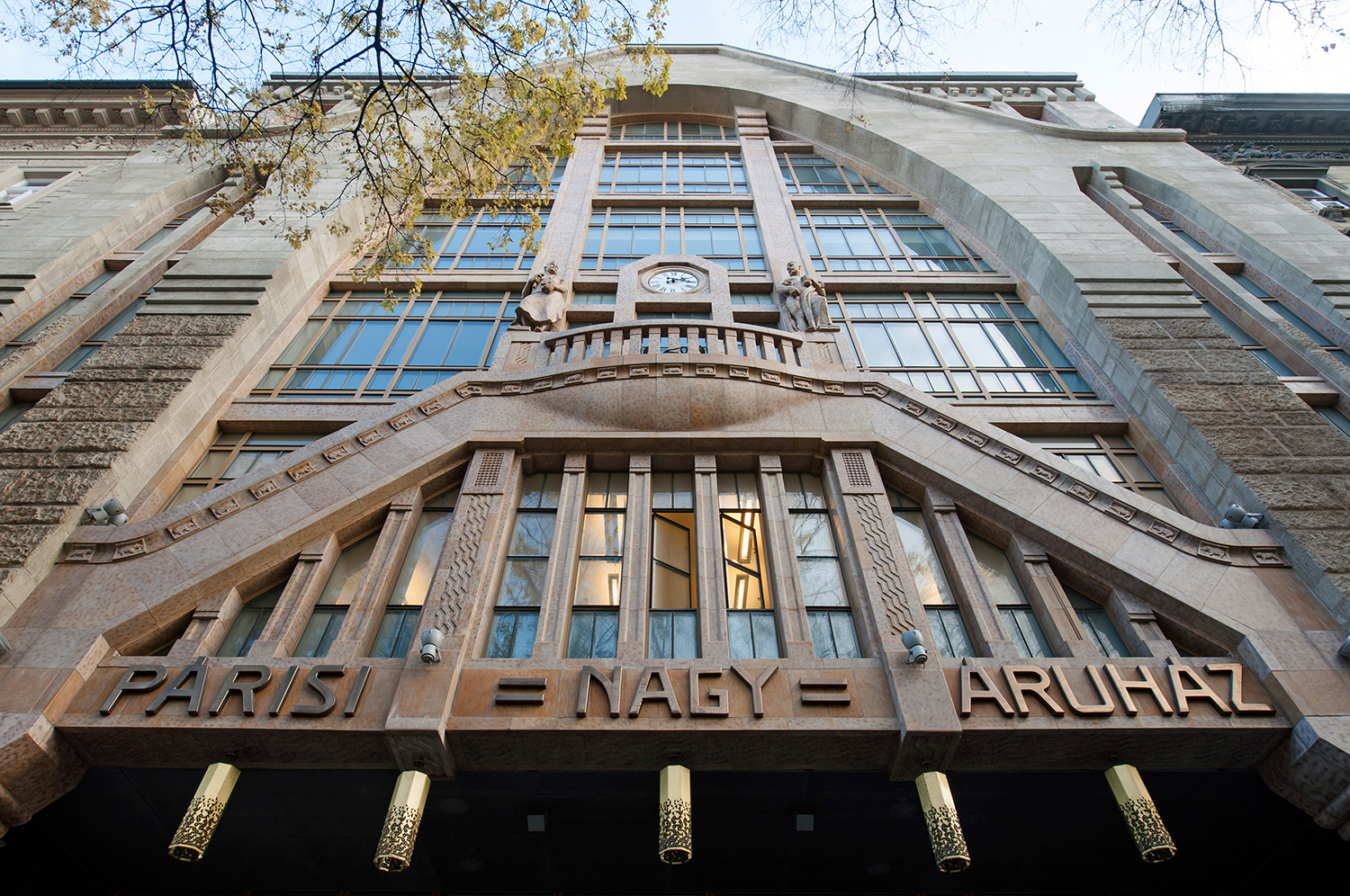Modelled on its counterpart in Paris, the huge glazed atrium, all-glass lifts, marble columns and grandiose roof garden of the Paris Department Store were a first for Budapest.
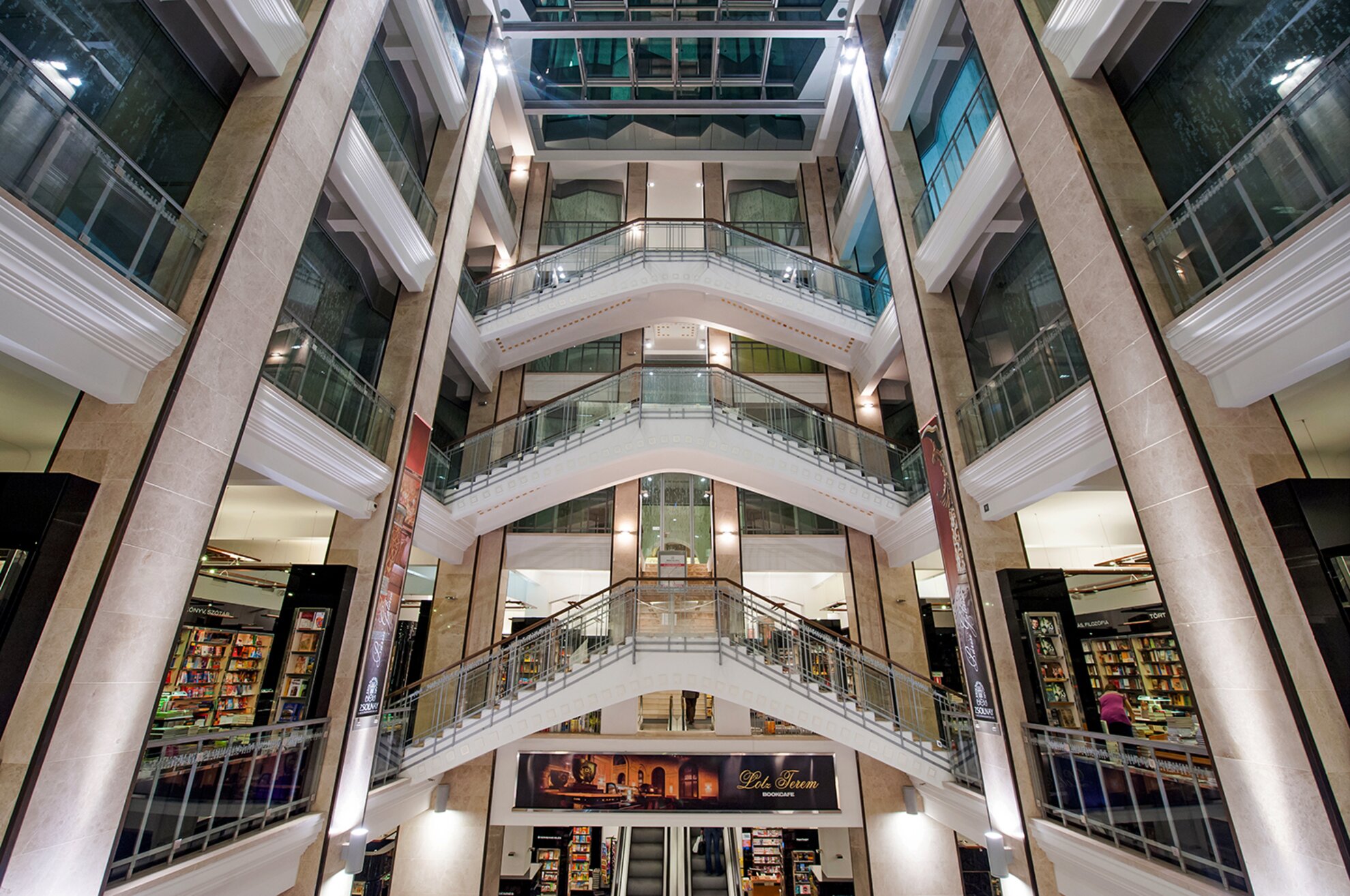
But this was not what the building was created for. When the construction of Andrássy út began in the early 1870s, large companies, wealthy citizens and magnates threw in pots of money to acquire the best plots on Budapest’s most prestigious boulevard, where they could put up dazzling mansions and apartment buildings. It is no coincidence that City Casino Ltd also claimed an empty site here, as this where they wanted to construct the Terézváros Casino.
From casino to department store
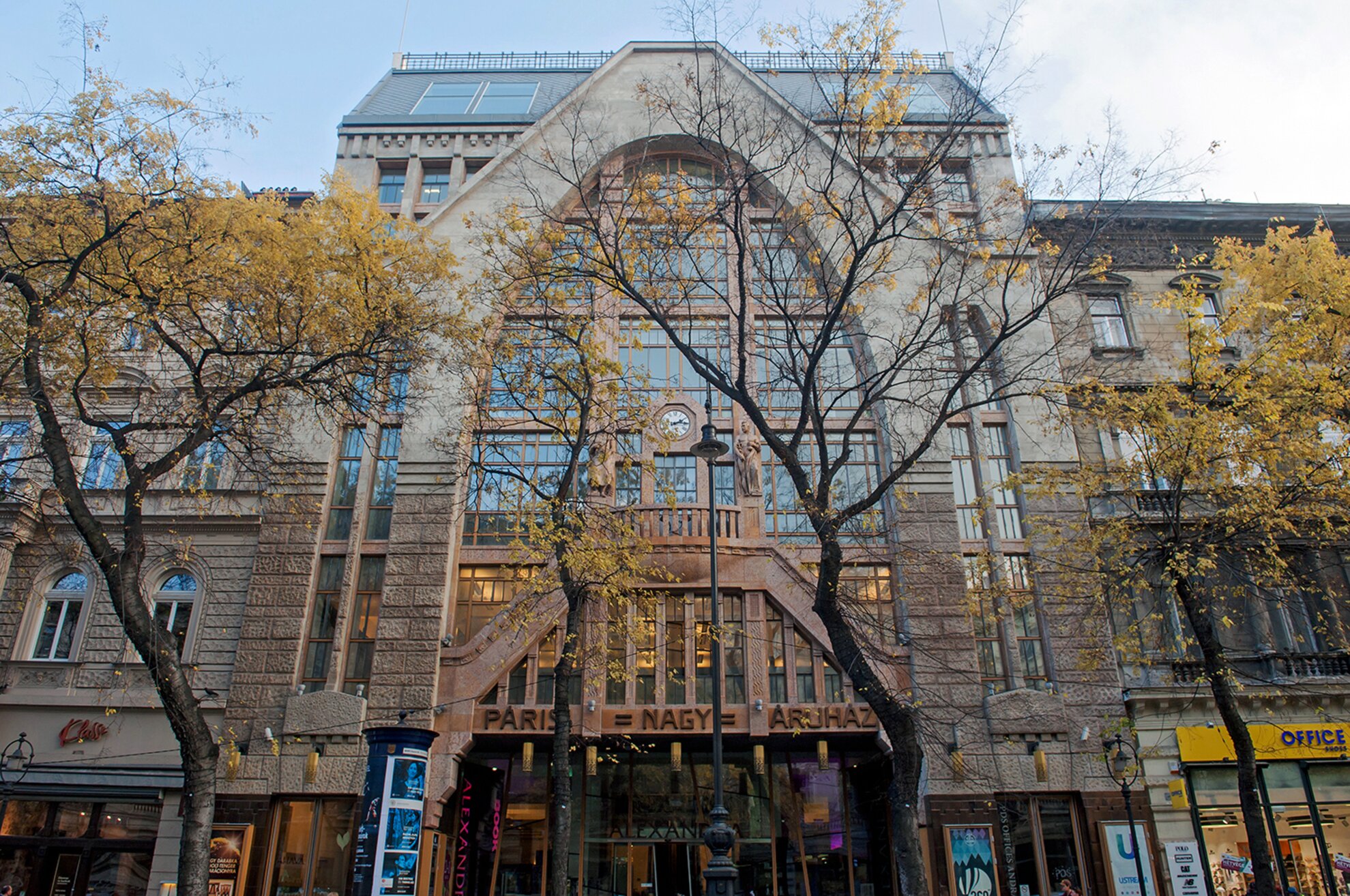
The Neo-Renaissance building, opened in 1884, had everything a casino needed: a beer hall, a restaurant, a ballroom, a billiard and reading room, frescoes by the famed Károly Lotz and huge marble columns.
Meanwhile, over on the corner of Rákóczi út and Klauzál utca, near today’s Blaha Lujza tér, a certain Sámuel Goldberger ran a department store. In 1903, an electrical fault caused a terrible fire, resulting in the deaths of 14 people, residents of the above apartments jumping off the roof in desperation. Security regulations had been lax, it later transpired.
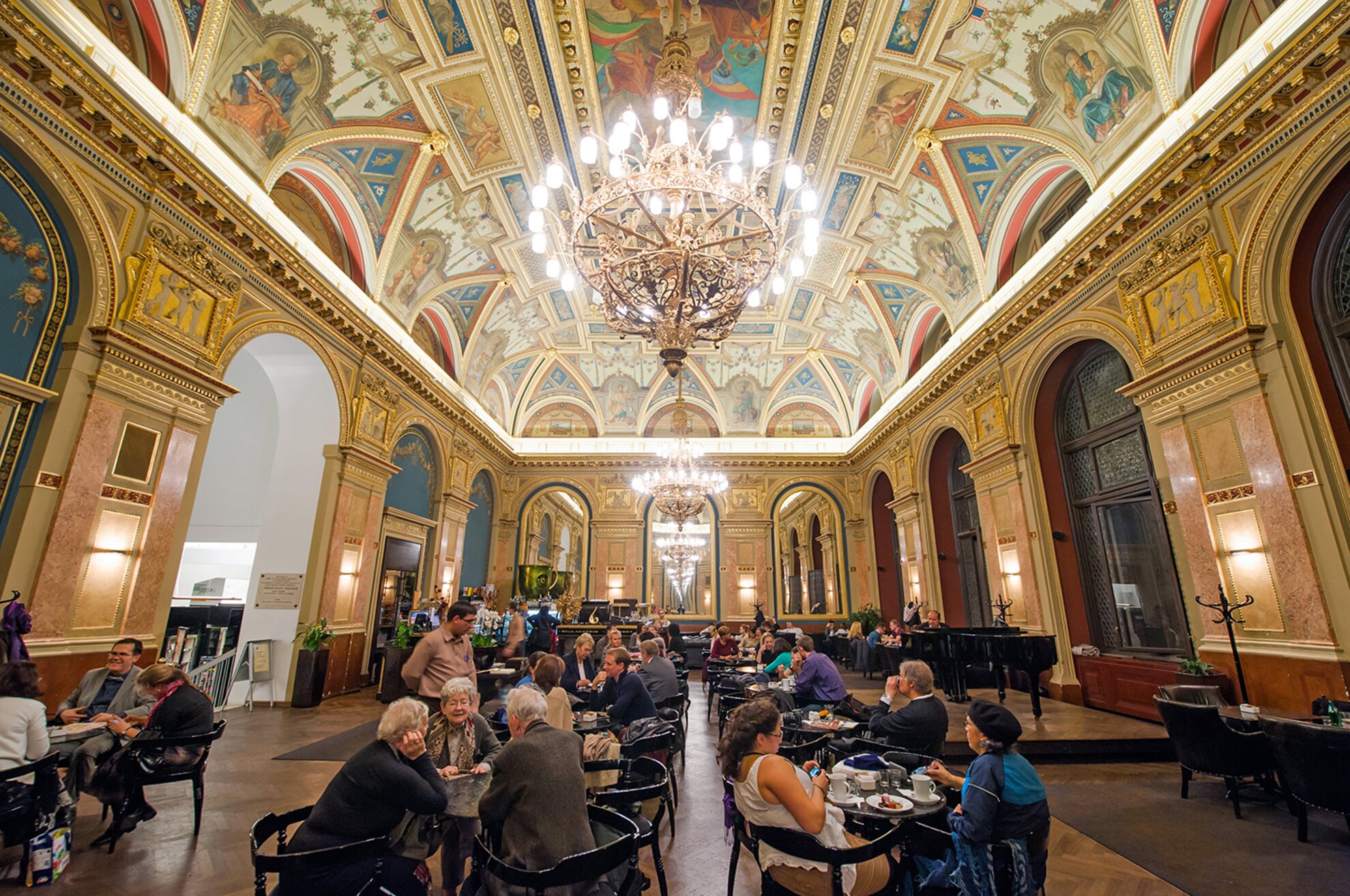
With all their stock gone, the Goldbergers decided to move their operation to a new location and the four-storey casino at Andrássy út 39 was crying out for a prestigious business. The casino had been put up with poor materials, convincing the Goldbergers to start again from scratch.
Paying due attention to the most up-to-date fire protection, including their own water pumps, the owners had architect Zsigmond Sziklai create a veritable palace to commerce, with five glass-walled lifts and a roof terrace. The Art Nouveau style of the day underlined the design.
Surrounded by one of the first reinforced concrete-framed buildings in Hungary, the building gave free range to Zsolnay’s famed ornamental elements and the decorative glass of Miksa Róth, signature details of Art Nouveau in Budapest.
Romantic rooftop
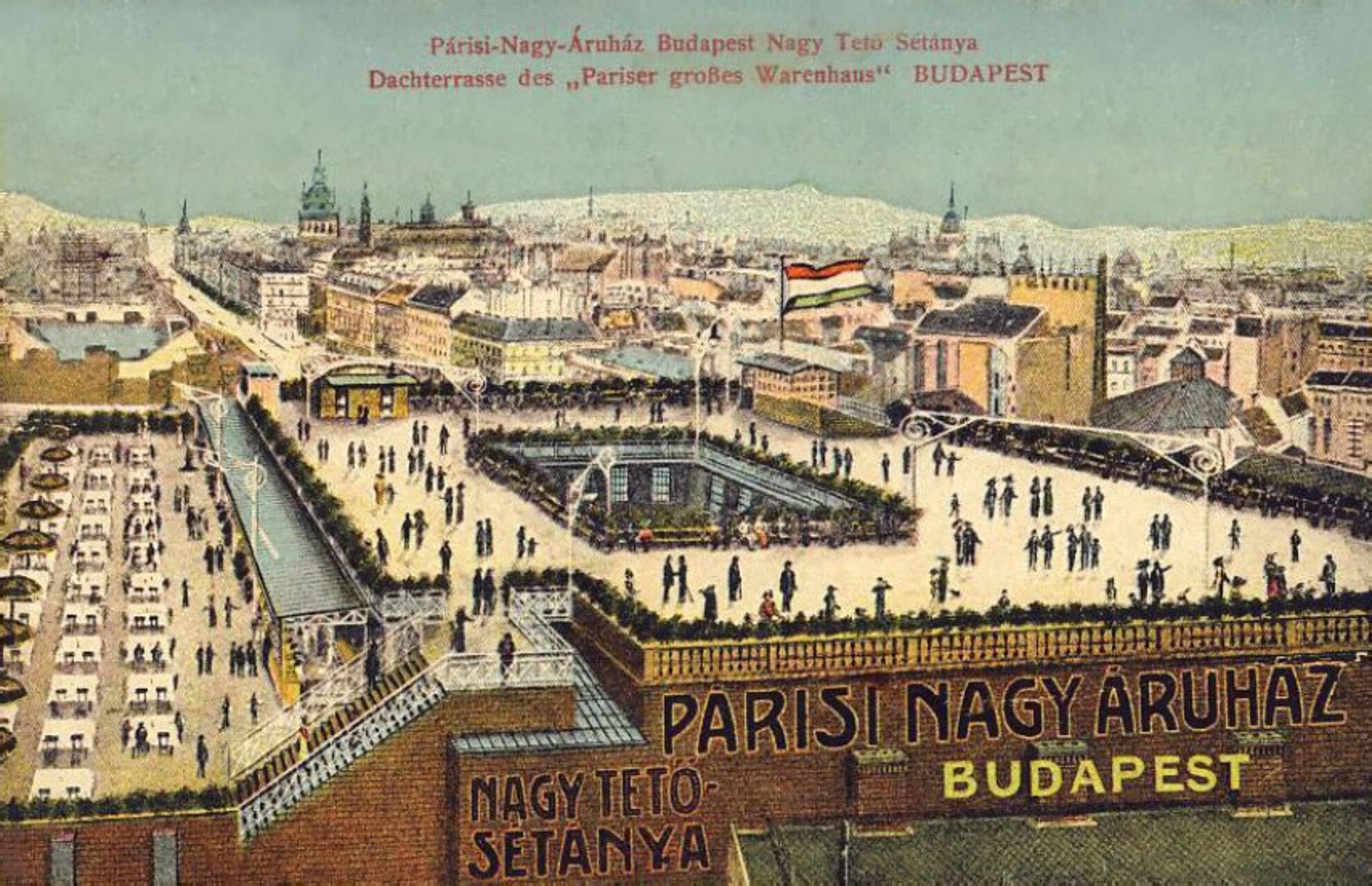
Once opened on 3 March 1911, the Párisi Nagy Áruház (‘Paris Department Store’) took its name from its role model, the Bon Marché on the Left Bank, partly designed by Eiffel and the inspiration for similar establishments in Sydney and Buenos Aires.
Despite its luxury appearance, the store appealed to everyday shoppers where, along with regular promotions, there were also so-called 96-penny packages, perhaps a scarf, ankle guard or eight pairs of shoelaces, up to 250 grammes of butter or a pair of rayon stockings.
Originally, a skating rink was planned for the roof but this was sidelined for a romantic panoramic terrace open in spring and summer.
Socialist fashion
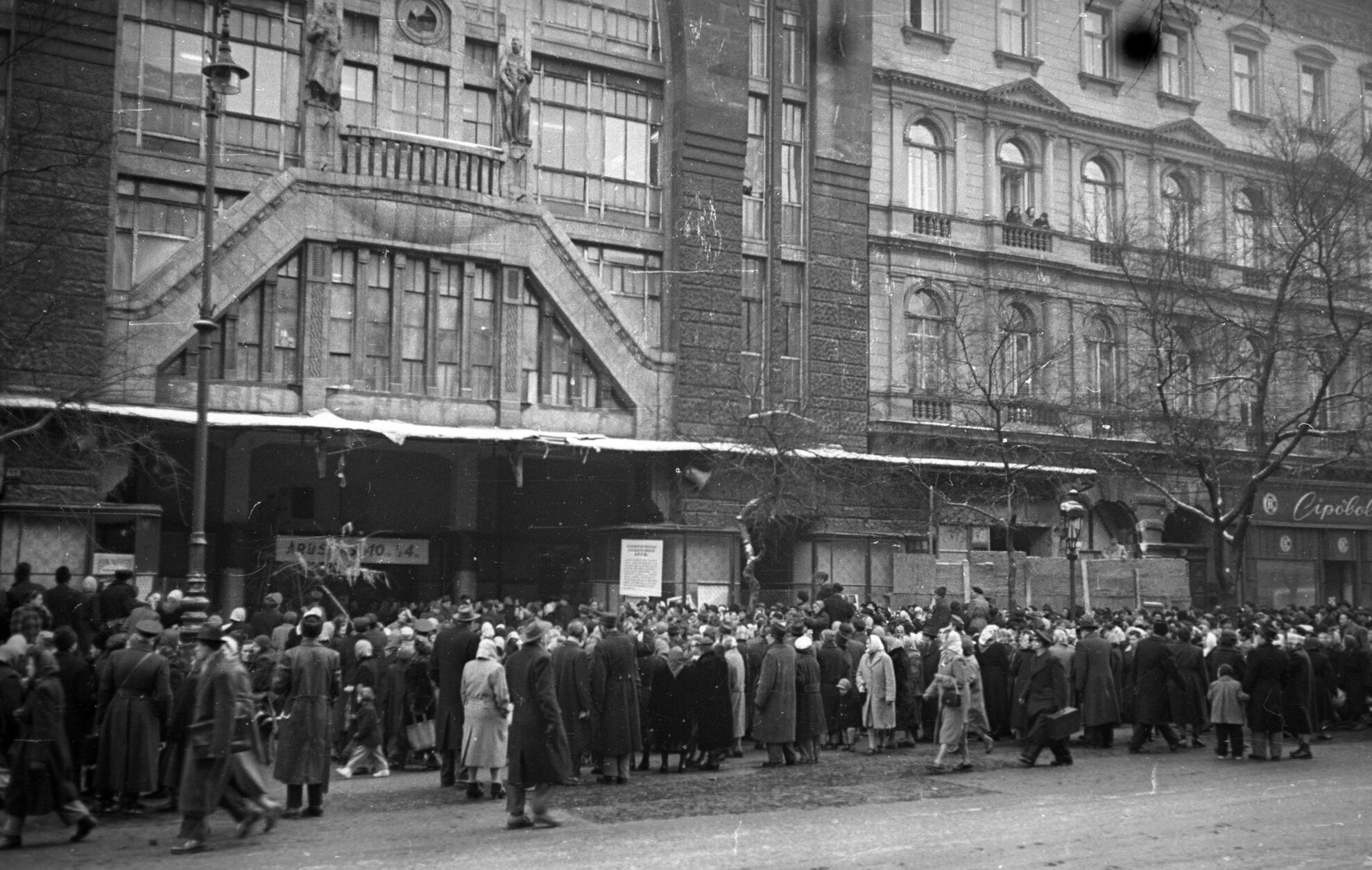
After World War I, as the country was rebuilding, refugees flooded in from parts of former Hungary now the other side of the border, and cash flow was limited. The store teetered on the verge of bankruptcy. To save what they could, the Goldbergers relinquished ownership and the store went for the cheap end of the market, alienating much of its original customer base.
After World War II, the store lost its status completely, functioning as the warehouse of the State Book Distribution Company until 1958, when the government decided to relocate the Divatcsarnok fashion store from Rákóczi út.
Queues formed all the way to St Teresa’s Church on Király utca for the most stylish items available under Socialism, and the largest selection of shoes in town. Shoppers came from outside Budapest to find the hat, coat, dress and footwear of their dreams.

Changing tenants in recent years, from the Alexandra
bookstore to the Andrássy Adventure Centre to the Café Párisi – all now closed – the Párisi Nagy Áruház is now home to the 360 Bar.
A permanent reminder of the former casino
remains the frescoes of Károly Lotz, which Zsigmond Sziklai wisely decided to
keep when creating the department store some 110 years ago.
